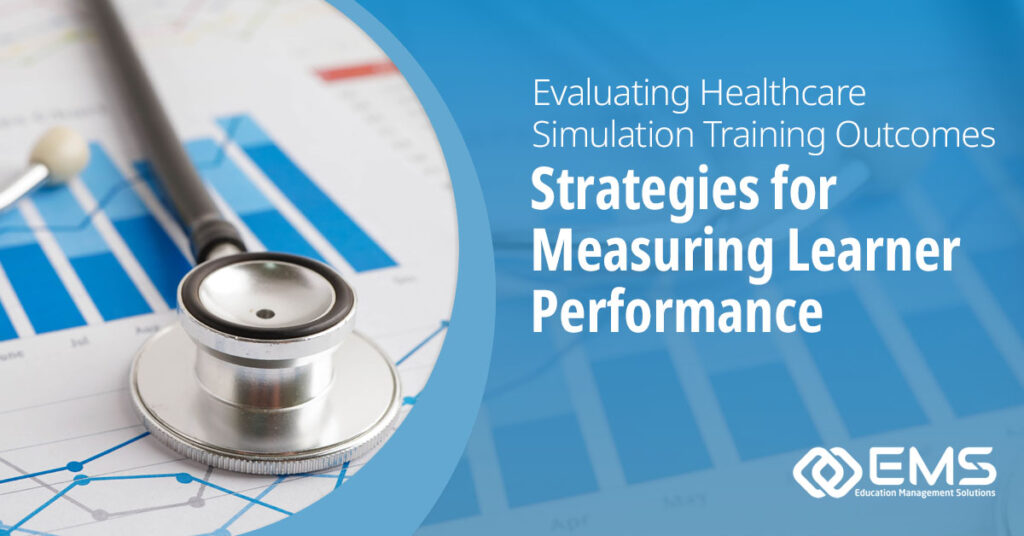To ensure the effectiveness of healthcare simulation training, educators must employ robust strategies for evaluating learner performance. But how do we know if healthcare students are truly benefiting from this unique style of instruction modality and, additionally, are ready for real-world patient care? This blog explores proven standard methods and strategic approaches to measuring outcomes in healthcare simulation training.
The Importance of Measuring Performance in Simulation Training
Healthcare simulation is more than just an educational exercise, it’s a critical component in improving patient safety, practitioner competence, and care quality. Reliable and valid measurement of simulation outcomes can:
- Identify learning gaps and tailor future training
- Ensure skill competence before clinical practice
- Support credentialing and continuing education
- Provide evidence for program effectiveness
Without proper evaluation strategies, training programs risk missing valuable insights into learner progress and areas in need of improvement.
Key Strategies for Evaluating Learner Performance
- Objective Structured Clinical Examinations (OSCEs)
OSCEs are a gold standard in healthcare education for objectively assessing a wide range of clinical competencies. During an OSCE, learners rotate through multiple stations where they encounter standardized patients, clinical scenarios, or tasks designed to evaluate specific skills such as history taking, physical examination, patient counseling, or emergency management.
Each station is carefully scripted and includes a checklist or rubric outlining the expected actions and behaviors. Evaluators score learner performance based on these criteria, which helps minimize subjectivity and ensures consistency across assessments. Stations may test technical skills (e.g., inserting an intravenous line), communication (e.g., delivering bad news to a patient), and decision-making under pressure.
OSCEs are highly versatile—they can be tailored for formative feedback during training, or used as summative assessments for credentialing and licensure. Importantly, they provide immediate, structured feedback to learners, allowing them to understand their strengths and areas for improvement.
Best Practice: Use validated checklists, train assessors to maintain reliability, and periodically review station scenarios to align with current clinical standards and learning objectives.
- Direct Observation and Feedback
Direct observation is a cornerstone of effective simulation training, allowing facilitators to witness learners’ skills, decision-making, and team interactions in real time. During simulation exercises, experienced observers, often instructors or clinical experts, watch participants as they navigate scenarios, noting strengths, areas for improvement, and adherence to best practice standards.
This approach offers the unique advantage of providing immediate feedback. Observers can pause the scenario for brief instructional moments or offer detailed debriefings afterward, helping learners recognize and understand what went well and where they need to improve.
Best Practice: Utilize structured tools (e.g., validated rating scales), ensure feedback is specific, actionable, and delivered soon after the simulation, and create an open atmosphere that encourages discussion and questions.
- Self-Assessment and Reflective Practice
Self-assessment and reflective practice are crucial strategies for developing lifelong learning habits among healthcare professionals. After participating in simulation exercises, learners are encouraged to critically evaluate their own performance, considering both their strengths and areas needing improvement. This introspective process promotes self-awareness and helps trainees take ownership of their learning journey.
Effective self-assessment is much more than simply asking, “How do you think you did?” Facilitators can use guided reflection tools or structured questionnaires to help learners analyze specific aspects of the simulation, such as decision-making, communication, teamwork, or technical skills.
Pairing self-assessment with facilitator feedback is particularly powerful. When learners compare their own perceptions with external observations, they can identify blind spots and celebrate their achievements. Over time, this practice fosters a culture of continuous improvement and boosts confidence in clinical decision-making.
Best Practice: Guide reflection with targeted prompts or standardized self-assessment forms. Encourage honest and constructive self-analysis, and integrate facilitator and peer feedback for a comprehensive understanding of individual performance and growth.
- Simulation Assessment Tools
Simulation assessment tools can assess critical thinking, technical proficiency, teamwork, communication, and overall effectiveness within clinical scenarios. By providing standardized and objective metrics, simulation assessment tools play a crucial role in ensuring consistency, fairness, and validity in performance evaluations.
Popular examples include the Simulation Effectiveness Tool–Modified (SET-M), which evaluates aspects like confidence, satisfaction, and perceived learning, as well as TeamSTEPPS, which focuses on group interactions, leadership, and collaboration under pressure.
Regular use of well-designed assessment tools allows educators to track learner progress over time, identify trends, and fine-tune simulation curriculums. Additionally, robust data from these tools can support program accreditation, research, and quality improvement initiatives.
Best Practice: Select assessment tools that match the learning goals and simulation complexity. Ensure all users are trained in the proper administration and interpretation.
The Ongoing Challenge of Measuring Learner Performance in Simulation
Comprehensive evaluation of healthcare simulation training outcomes is essential to ensure learners develop the competence and confidence required for safe patient care. By adopting a mix of validated tools, direct observation, and self-reflection, educators can gain meaningful insights into trainee performance and drive continuous improvement in simulation-based education.
To learn how Education Management Solutions can aid your training program in evaluating the best ways to aggregate and interpret your simulation training data, contact one of our solutions specialists today.

